|
Books Should Be Free Loyal Books Free Public Domain Audiobooks & eBook Downloads |
|
|
Books Should Be Free Loyal Books Free Public Domain Audiobooks & eBook Downloads |
|
Kid's Books |
|---|
|
Book type:
Sort by:
View by:
|
By: Jean Ingelow (1820-1897) | |
|---|---|
 Mopsa the Fairy
Mopsa the Fairy
Jean Ingelow (1820 – 1897) was one of the more famous poets of the period, indeed many people suggested that she should succeed Alfred, Lord Tennyson as the first female Poet Laureate when he died in 1892. Mopsa the Fairy, written in 1869 is one of her more enduring stories. It is a delightful fantasy about a young boy who discovers a nest of young fairies and tells of their adventures together. | |
By: Olive Beaupre Miller [editor] (1883-1968) | |
|---|---|
 In the Nursery of My Bookhouse
In the Nursery of My Bookhouse
Full of delightful nursery rhymes, charming poems and engaging stories, folk and fairy tales, this is the first volume of the "My Bookhouse" series for little ones. Originally published in the 1920's as a six volume set, these books, edited by Olive Beaupre Miller, contained the best in children's literature, stories, poems and nursery rhymes. They progressed in difficulty through the different volumes - this first being intended for the youngest audience. | |
By: Annie F. Johnston (1863-1931) | |
|---|---|
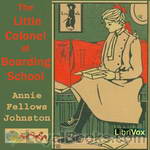 The Little Colonel at Boarding-School
The Little Colonel at Boarding-School
Because of the illness of her grandfahter, Lloyd Sherman, the Little Colonel, finds herself being sent off to boarding school from her home in Lloydsboro Valley, Kentucky. Jolly times are mixed with lessons in this 7th book in the "Little Colonel" series for girls. | |
By: W. S. Gilbert (1836-1911) | |
|---|---|
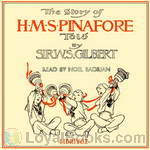 The Story of the H.M.S. Pinafore
The Story of the H.M.S. Pinafore
H.M.S. Pinafore; or, The Lass That Loved a Sailor, is a comic opera in two acts, with music by Arthur Sullivan and a libretto by W. S. Gilbert. It opened in London, England, on 25 May 1878 and ran for 571 performances, which was the second-longest run of any musical theatre piece up to that time. H.M.S. Pinafore was Gilbert and Sullivan's fourth operatic collaboration and their first international sensation. This is not that opera.It was adapted as a children's book by W. S. Gilbert entitled The Story of HMS Pinafore, or The Pinafore Picture Book, and includes some lovely illustrations by Alice B... | |
By: Francis J. Finn (1859-1928) | |
|---|---|
 His First and Last Appearance
His First and Last Appearance
The scene of the story is laid partly in Milwaukee, partly in New York. It describes the trials of the orphaned Lachance children. The boy hero is of a loving and lovable disposition and wins the hearts of all. The author has combined pathetic incidents with religious consolations, and gives zest to the whole by diffusing his genial humor throughout.From the author of Tom Playfair, Percy Wynn, But Thy Love and thy Grace, and many more. | |
By: Various | |
|---|---|
 Boys and Girls Bookshelf; a Practical Plan of Character Building, Volume I (of 17) Fun and Thought for Little Folk
Boys and Girls Bookshelf; a Practical Plan of Character Building, Volume I (of 17) Fun and Thought for Little Folk
| |
By: Walter De la Mare (1873-1956) | |
|---|---|
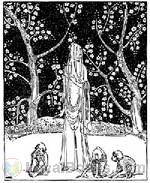 The Three Mulla-mulgars
The Three Mulla-mulgars
Three monkey brothers, Thumb, Thimble, and Nod, are Mulla-mulgars or royal monkeys. As she dies, their mother gives them the enchanted Wonderstone for protection, and tells them to follow their father. They embark on a journey of fantastical adventure to find their father, who left years earlier in search of the kingdom of his brother, the Prince of the Valleys of Tishnar, promising to return for them after he had found the way. | |
By: Rev. Thomas J. Hosty (1910-2004) | |
|---|---|
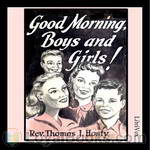 Good Morning, Boys and Girls!
Good Morning, Boys and Girls!
Forty simple, delightful sermons for children. The stories cover a full school year, all Sundays and a few holydays in between. Under such engaging chapter titles, as Chasing Rainbows, Caterpillars, The Best Christmas Gift, and Breakfast of Champions, the book entertains while it instructs. Here Heaven takes on a new closeness as “God’s Home”; the Bible is a collection of “Letters from God”; while the devil is called “a Real Bogeyman.” Such important subjects as beauty of soul, gratitude, Sunday Mass, the foolishness of sin, the Rosary, and temptation are dealt with in a refreshing manner guaranteed to capture the interest of every child. | |
By: Gerard F. Scriven (?-1949) | |
|---|---|
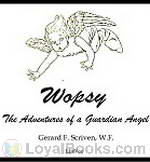 Wopsy: The Adventures of a Guardian Angel
Wopsy: The Adventures of a Guardian Angel
Wopsy is the story of a very young Guardian Angel, sent to watch over a pagan baby in Africa. Wopsy desperately wants his baby's soul to become white and clean in baptism, but what is a small guardian angel to do when there is no missionary priest in the village?The author was a member of the missionary order of priests known as the White Fathers (So named because of the white habits they wore). He wrote the "Wopsy" series of books in order to encourage missionary vocations in young children. | |
By: Unknown | |
|---|---|
 National Nursery Book
National Nursery Book
"The Publishers offer in this little volume of well known and long loved stories to their young readers. The tales which have delighted the children of many generations will, they feel assured, be equally welcome in the nurseries of the present day, which, with the popularity and antiquity of the contents of the volume, justify them in styling it The National Nursery Book." Red Riding Hood, The Three Bears, Mother Hubbard, Cinderella and many other well known stories, poems, nursery rhymes and songs are included in this little book. Note that the Punch and Judy story does include a lot of gratuitous violence but then that is what Punch and Judy seem to be all about, eh? | |
By: Unknown | |
|---|---|
 A Apple Pie and Other Nursery Tales
A Apple Pie and Other Nursery Tales
| |
By: Rev. Gerald T. Brennan (1898-1962) | |
|---|---|
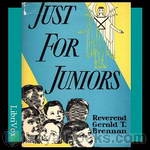 Just For Juniors: Little Talks to Little Folks
Just For Juniors: Little Talks to Little Folks
This fourth addition to Father Brennan's delightful series of "Angel Food" story books brings twenty-eight more tales which, while they excite youthful imaginations, at the same time teach the important lessons of knowing, loving and serving God, and point the way - the children's own little way to heaven. | |
By: Unknown | |
|---|---|
 The Illustrated Alphabet of Birds
The Illustrated Alphabet of Birds
| |
By: Lizzie Lawson and Robert Ellice Mack | |
|---|---|
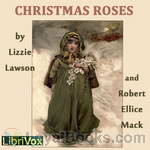 Christmas Roses
Christmas Roses
A beautiful collection of pretty little poems. | |
By: Johanna Spyri (1827-1901) | |
|---|---|
 What Sami Sings With The Birds
What Sami Sings With The Birds
Old Mary Ann has done her best to bring up her son on her own. Like other relatives, her son has a longing to travel off over the mountains. Mary Ann goes with him. Later on her son marries, but loses his wife after she gives birth to their son. Mary Ann assumes responsibility of her grandson, while her son moves away in the agony of his grief. This is the story of what happens to her grandson and where his Grandmother, the songs of the birds, and his faith leads him. | |
By: Unknown | |
|---|---|
 Aladdin and the Magic Lamp
Aladdin and the Magic Lamp
| |
By: Hamilton Wright Mabie (1846-1916) | |
|---|---|
 Famous Stories Every Child Should Know
Famous Stories Every Child Should Know
The group of stories brought together in this volume differ from legends because they have, with one exception,no core fact at the centre, from myths because they make no attempt to personify or explain the forces or processes of nature, from fairy stories because they do not often bring to the stage actors from a different nature from ours.... The stories which make up this volume are closer to experience and come, from the most part, nearer to the every-day happenings of life. | |
By: Anonymous | |
|---|---|
 The Three Bears
The Three Bears
| |
By: Various | |
|---|---|
 King's Daughter and Other Stories for Girls
King's Daughter and Other Stories for Girls
A charming collection of short stories for young girls, including The King's Daughter, The Old Brown House, A Story for School Girls, What One Lie Did, Two Ways of Reading the Bible, Courtesy to Strangers, Live for Something, and Jennie Browning. Each story subtly teaches an important lesson. | |
By: Various | |
|---|---|
 Boys and Girls Bookshelf (Vol 2 of 17) Folk-Lore, Fables, And Fairy Tales
Boys and Girls Bookshelf (Vol 2 of 17) Folk-Lore, Fables, And Fairy Tales
| |
 Poems Teachers Ask For, Book Two
Poems Teachers Ask For, Book Two
| |
By: Anonymous | |
|---|---|
 Harry's Ladder to Learning
Harry's Ladder to Learning
| |
 Aladdin or The Wonderful Lamp
Aladdin or The Wonderful Lamp
| |
 Little Stories for Little Children
Little Stories for Little Children
| |
 Cinderella; or, The Little Glass Slipper and Other Stories
Cinderella; or, The Little Glass Slipper and Other Stories
| |
By: Various | |
|---|---|
 Dear Santa Claus
Dear Santa Claus
| |
By: Anonymous | |
|---|---|
 My Young Days
My Young Days
| |
By: Various | |
|---|---|
 Our Boys Entertaining Stories by Popular Authors
Our Boys Entertaining Stories by Popular Authors
| |
By: Anonymous | |
|---|---|
 Pleasing Stories for Good Children with Pictures
Pleasing Stories for Good Children with Pictures
| |
 A Picture Book, for Little Children
A Picture Book, for Little Children
| |
 All About the Little Small Red Hen
All About the Little Small Red Hen
| |
By: Various | |
|---|---|
 Poems Teachers Ask For Selected by readers of "Normal Instructor-Primary Plans"
Poems Teachers Ask For Selected by readers of "Normal Instructor-Primary Plans"
| |